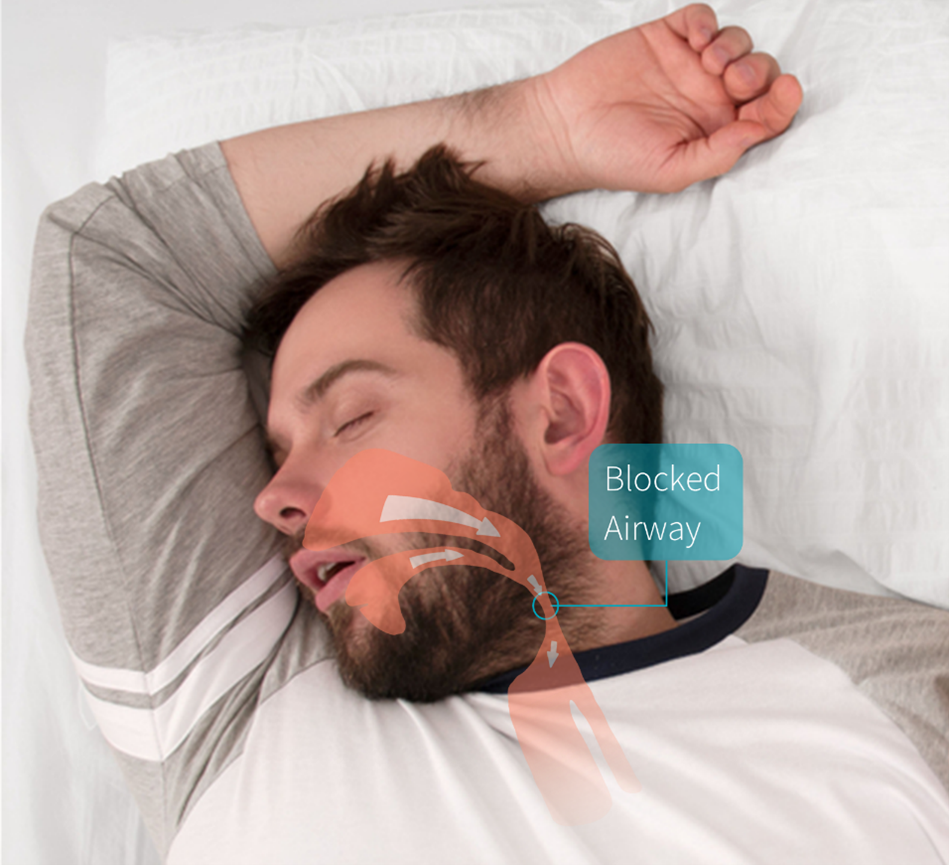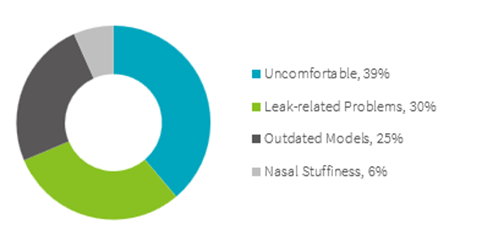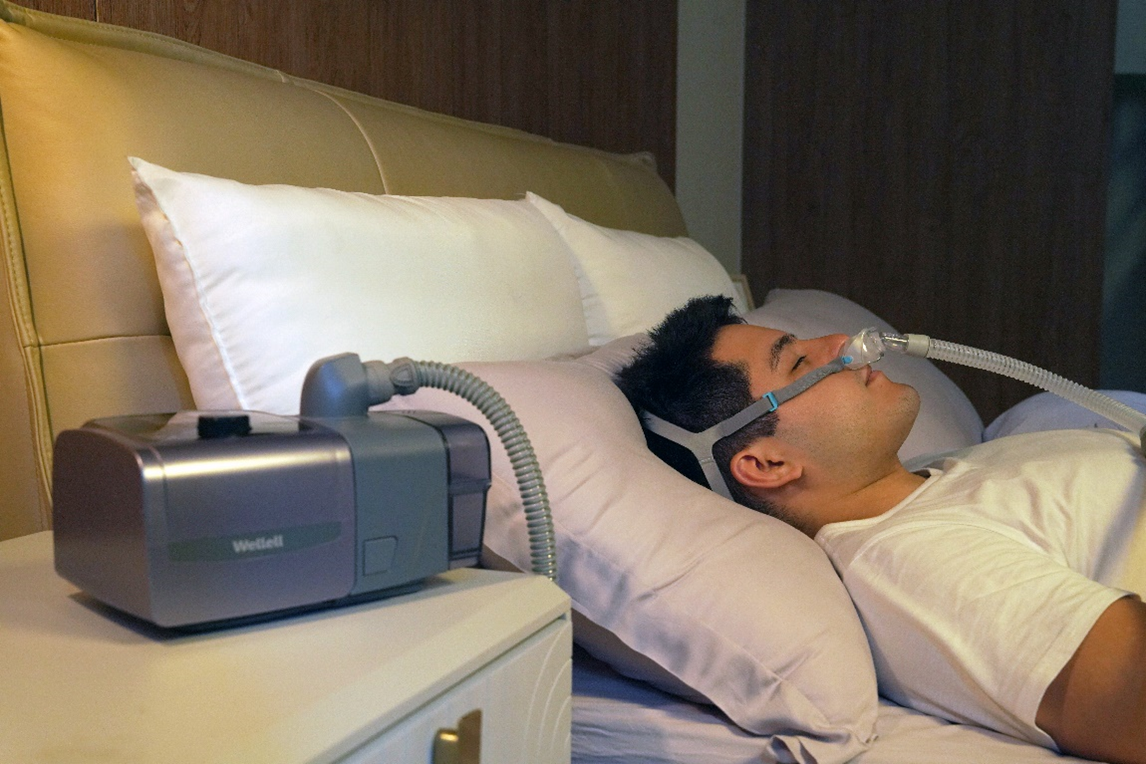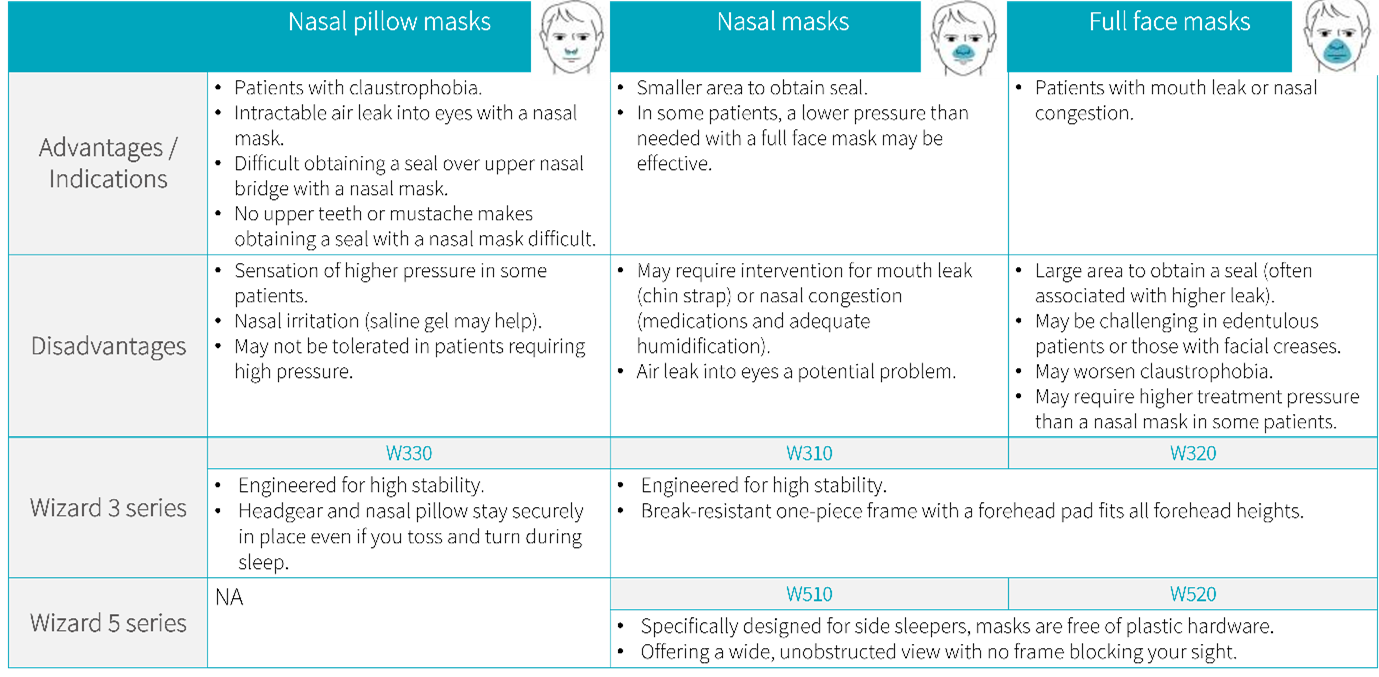Article
2024 Jun 13
Reduce CPAP Mask Discomfort with the New Wellell W330 Nasal Pillow
 Obstructive Sleep Apnea (OSA) is a common sleep disorder that affects many individuals worldwide. Positive Airway Pressure (PAP) therapy is one of the most effective treatments for OSA. However, approximately 70% of OSA patients abandon their CPAP treatment within the first year, mainly due to mask-related discomfort. Let's explore the common side effects of CPAP masks.1
Obstructive Sleep Apnea (OSA) is a common sleep disorder that affects many individuals worldwide. Positive Airway Pressure (PAP) therapy is one of the most effective treatments for OSA. However, approximately 70% of OSA patients abandon their CPAP treatment within the first year, mainly due to mask-related discomfort. Let's explore the common side effects of CPAP masks.1
Common Side Effects of CPAP Masks
A 2011 study mentioned that the nasal pillows were more comfortable than the standard nasal masks2. Mask-related discomforts and leakage problems can increase patients' likelihood of non-adherence to CPAP therapy by up to 7.2-folds.3
The reasons for switching masks include:

Switching masks successfully resolved these problems in 61% of cases.3
Local side effects, such as pressure sores, skin ulcerations, air leaks, mask dislodgement, claustrophobia, or local allergic reactions, occur in up to 50% of patients. Because the PAP mask must be tailored to the individual, proper mask fitting and patient education are important and may lead to fewer air leaks, better adjustment of the mask, and improved adherence to treatment 4. This is an important factor in planning resources for CPAP follow-up.
To address these common issues, Wellell has introduced the W330 nasal pillow, an innovative solution designed to enhance the comfort and effectiveness of CPAP therapy.

1. Easy to Wear and One-Hand Take Off
The W330 features a highly elastic and specially designed structure. The flexible 3D-shaped headgear can be easily worn in just three steps, with the added convenience of one-hand take off.
2. High Adaptability and Stability
The patented side frame structure and 3D-shaped headgear enhance stability and provide users with optimal coverage, ensuring the mask stays in place throughout the night.
3. Comfortable and Easy to Fall Asleep
The nasal cushion comfortably fits the nostrils without putting pressure on the upper lip. The minimal contact area of the side frame with the cheeks is suitable for users who frequently change positions while sleeping.
4. User-Friendly Design
The mask is easy to assemble and disassemble, with only three components making the process effortless. The "Logo Up" feature helps users correctly wear the device, ensuring the correct orientation even when worn at night.
By addressing the common issues faced by CPAP users, the Wellell W330 nasal pillow aims to improve adherence to CPAP therapy, providing a more comfortable and effective treatment experience for patients with OSA. If you or a loved one is struggling with CPAP therapy, consider trying the Wellell W330 nasal pillow for a better night's sleep and improved health.
If want to know more details about the W330
If you want to know how to choose the most suitable mask for you

Feel free to ask us for more details about the W330. You can contact us at any time.
Reference:
- Ulander, M., Johansson, M. S., Ewaldh, A. E., Svanborg, E., & Broström, A. (2014). Side effects to continuous positive airway pressure treatment for obstructive sleep apnoea: changes over time and association to adherence. Sleep & breathing = Schlaf & Atmung, 18(4), 799–807. https://doi.org/10.1007/s11325-014-0945-5
- Ryan S, Garvey JF, Swan V, Behan R, McNicholas WT (2011) Nasal pillows as an alternative interface in patients with obstructive sleep apnoea syndrome initiating continuous positive airway pressure therapy. J Sleep Res 20:367–373
- Bachour, A., Vitikainen, P., & Maasilta, P. (2016). Rates of initial acceptance of PAP masks and outcomes of mask switching. Sleep & breathing = Schlaf & Atmung, 20(2), 733–738. https://doi.org/10.1007/s11325-015-1292-x
- Kakkar RK, Berry RB (2007) Positive airway pressure treatment for obstructive sleep apnea. Chest 132:1057–1072

